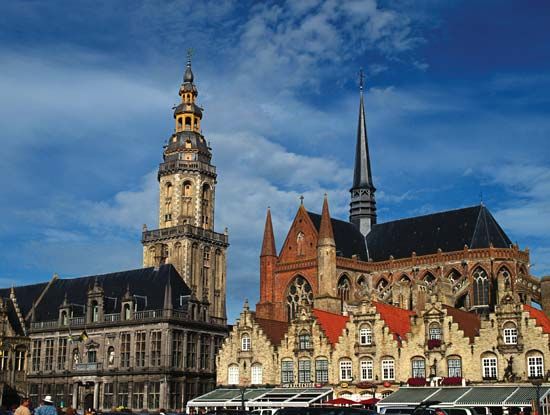Veurne
Our editors will review what you’ve submitted and determine whether to revise the article.
- French:
- Furnes
Veurne, municipality, Flanders region, western Belgium. The municipality lies at the junction of four canals, northeast of Dunkirk, France. It was founded about 870 by Baldwin I Iron-Arm (or Ferreus), first ruler of Flanders. An important town of the Spanish Netherlands, it was often besieged in the 17th century. During World War I, it was the centre of that part of Belgium unoccupied by the Germans.
An agricultural market for the fertile coastal plain of the Veurne-Amblecht Polders (land reclaimed from the sea), Veurne also manufactures bricks and tiles. It is famous for its annual processions of the Holy Cross (in May) and of the Penitents (in July), both dating from medieval times. Historical buildings grouped around the ancient Grote Markt (marketplace) include the 15th-century Gothic-style Spanish Pavilion (until 1586 the town hall), the Meat Market (1615, now a theatre), the 15th-century St. Nicholas Church with its massive tower, the Spanish Guard House (1636), the town hall (1596–1612 and restored in 1880), the Palace of Justice (1612), the Gothic Belfry (1628, burned 1940 but restored), and St. Walburga’s Church (begun 1230–80). At Coxyde (Flemish: Koksijde), an often-sacked 12th-century Cistercian abbey has been unearthed. Pop. (2008 est.) 11,748.










